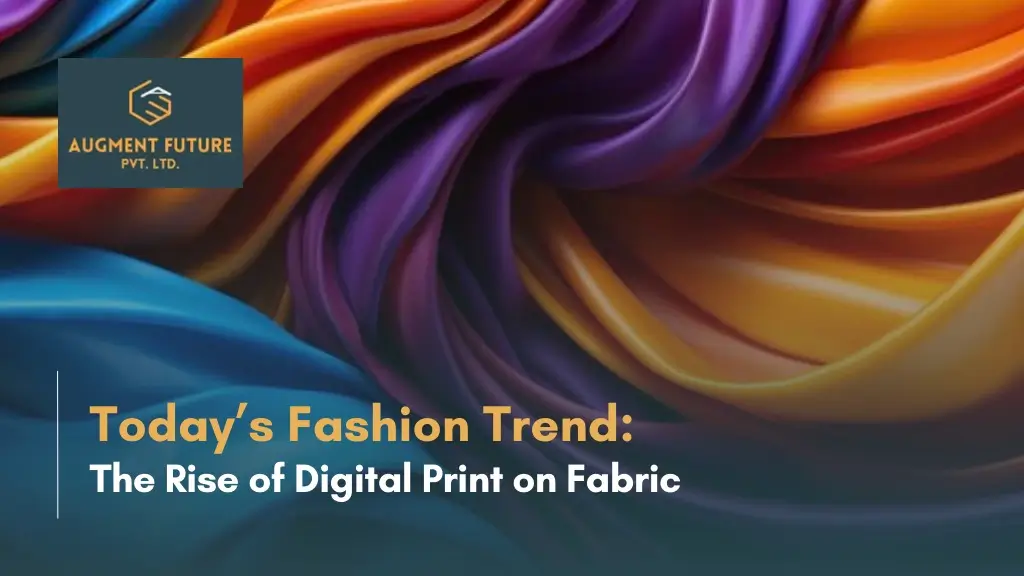Introduction
Digital print on fabric is not just a passing trend; it is reshaping the way fashion operates, bridging the gap between art, technology, and sustainability. With this advanced method, designers can produce high-quality prints that were previously impossible with traditional techniques. Whether for custom clothing or limited-edition pieces, digital printing has opened up new possibilities, allowing intricate patterns, photorealistic imagery, and personalized designs to thrive. This technology also meets the increasing consumer demand for uniqueness while reducing waste, making it a crucial tool in the shift toward sustainable fashion.
What is Digital Print on Fabric?
Definition and Concept
Digital fabric printing refers to the process of directly transferring digital designs onto textiles using specialized printers. Unlike traditional screen printing, which relies on stencils and multiple layers for each color, digital printing simplifies the process, delivering seamless and precise prints. This method supports a wide variety of colors, gradients, and textures, enhancing creative freedom for designers. As a versatile tool, digital printing is well-suited for both customized fashion pieces and large-scale production, ensuring that brands can cater to various market demands efficiently.
How It Works?
Designs are created using digital software and are transferred onto fabric using inkjet technology. High-resolution printers equipped with eco-friendly inks ensure vibrant colors and intricate details. The process eliminates the need for multiple screens, streamlining production and reducing material waste. This flexibility allows for on-demand printing, a practice that has become essential for brands aiming to stay agile in today’s fast-paced market.
Evolution of Digital Printing in Fashion
From Traditional Methods to Digital Innovation
The transition from manual printing techniques, such as block printing and screen printing, to digital methods represents a major leap in the fashion industry. In earlier times, printing on fabric required complex setups and high labor costs. Digital technology simplifies this process by offering precision with minimal human intervention. The adoption of computer-to-fabric printing has not only reduced the environmental impact but has also made it possible to introduce limited-edition designs quickly.
Adoption by Designers and Brands
Luxury fashion houses and independent designers alike have integrated digital printing into their creative workflows. Its ability to produce intricate and customized patterns has made it popular among high-end streetwear labels and emerging designers. The use of digital printing has democratized fashion, allowing smaller brands to compete with large fashion houses by offering personalized collections with minimal overhead costs.
Benefits of Digital Printing in Fashion
Design Flexibility and Customization
The ability to print intricate patterns, gradients, and photorealistic images with ease sets digital printing apart from traditional methods. Designers no longer have to worry about production limitations and can experiment with an array of artistic elements. This technology also supports personalization, allowing consumers to purchase garments with bespoke designs, such as custom prints with names or photographs, catering to a growing demand for unique pieces.
Precision and Vibrancy in Colors
The color precision achievable through digital printing is unmatched. Advanced printers ensure that even the most complex designs maintain their vibrancy across multiple garments. This consistency is essential for maintaining quality in bulk printing, especially for branded merchandise and seasonal collections.
Sustainable and Eco-Friendly Approach
Digital printing significantly reduces waste and water usage, making it an eco-friendly alternative to screen printing. As sustainability becomes more integral to fashion, digital printing aligns with the industry’s shift toward green production practices. By using non-toxic, water-based inks, brands can lower their carbon footprint while delivering high-quality products.
Popular Trends in Digital Fabric Prints
Photorealistic and Nature-Inspired Prints
Designers are increasingly incorporating nature-inspired imagery into their collections, using digital printing to capture the smallest details in floral, animal, and landscape patterns. These prints add depth and emotion to garments, creating standout pieces.
Abstract and Geometric Patterns
Geometric designs are becoming a staple in streetwear and contemporary fashion, with bold patterns that appeal to younger audiences. Digital printing allows designers to push creative boundaries, experimenting with abstract art that would be challenging to produce using traditional methods.
Personalized and Customized Designs
The rise of personalized fashion has led to a surge in demand for custom apparel. Digital printing enables brands to offer clothing that reflects individual tastes, making it easy for consumers to add their names, messages, or unique patterns to garments.
Applications of Digital Print on Fabric
Apparel and Accessories
Digital printing is widely used for t-shirts, jackets, scarves, and more, allowing designers to add intricate details to everyday clothing. Accessories such as bags and shoes also benefit from digital prints, enhancing their appeal.
Home Textiles and Decor
The versatility of digital printing extends to home decor, where it is used to create cushions, curtains, and bedspreads with custom patterns. This trend reflects a growing consumer preference for personalized interiors.
Fashion Shows and Limited-Edition Collections
Runway shows and exclusive collections often feature digital prints, as designers can quickly produce unique pieces without compromising quality. This technology is crucial for creating one-off designs that captivate audiences and set trends.
Impact on the Fast Fashion Industry
Faster Time-to-Market
Digital printing allows brands to respond quickly to trends, delivering new collections within weeks instead of months. This agility is essential for fast fashion brands that need to stay ahead of the curve.
Reducing Inventory Risks with On-Demand Printing
By printing garments only when needed, brands can avoid the risks of overproduction and unsold inventory. On-demand printing ensures that each piece is made to order, reducing waste and improving profitability.
Technological Innovations in Digital Printing
Advanced Printing Machines
Modern printers are capable of producing high-resolution prints on various fabrics, ensuring that every design element is perfectly replicated. This technology supports bulk printing without compromising on detail.
Eco-Friendly Inks and Pigments
The use of biodegradable and non-toxic inks has become standard in digital printing, aligning with the industry’s focus on sustainability. These inks provide vibrant colors while minimizing environmental impact.
Integration of Augmented Reality in Design
The adoption of augmented reality (AR) tools enables consumers to visualize how garments will look with specific prints, enhancing the shopping experience and reducing returns.
Challenges in Digital Printing on Fabric
Color Consistency and Fabric Compatibility Issues
Achieving consistent colors across different fabrics can be challenging, as each material absorbs ink differently. Brands must invest in testing and calibration to maintain quality.
High Initial Investment for Printing Equipment
While digital printing offers long-term benefits, the cost of high-end printing machines can be a barrier for smaller brands and startups. However, many businesses see this investment as essential for staying competitive in a changing market.
Future Trends in Digital Fabric Printing
Collaboration with AI for Custom Designs
As AI technology becomes more integrated into fashion, designers will use it to create unique prints and patterns, offering even more customization options.
Rise of Sustainable Digital Printing Practices
The focus on sustainability will drive further innovation in digital printing, with brands adopting organic fabrics and recycled materials to meet consumer expectations.
Case Studies: Brands Leveraging Digital Fabric Prints
Luxury Fashion Houses
Several luxury brands have embraced digital printing to create exclusive collections that blend traditional craftsmanship with modern technology.
Independent Designers and Streetwear Labels
Independent designers use digital printing to produce one-of-a-kind pieces that cater to niche markets, offering unique designs that set them apart.
Conclusion
The rise of digital print on fabric marks a significant evolution in the fashion industry. By offering design flexibility, sustainability, and on-demand production, digital printing meets the needs of both designers and consumers. As new technologies like AI and AR enhance customization and shopping experiences, digital printing will continue to shape the future of fashion, balancing creativity, efficiency, and environmental responsibility.


